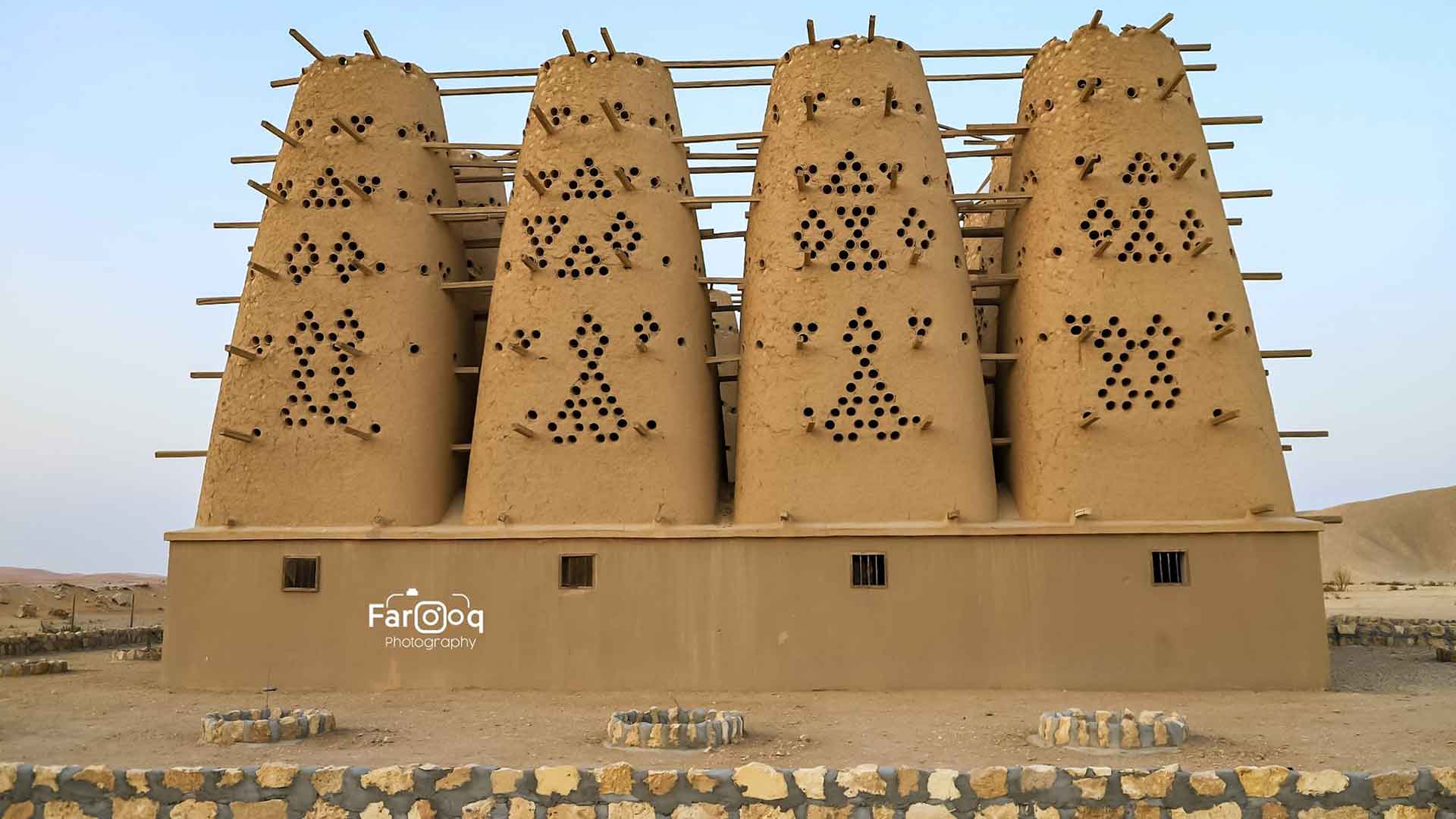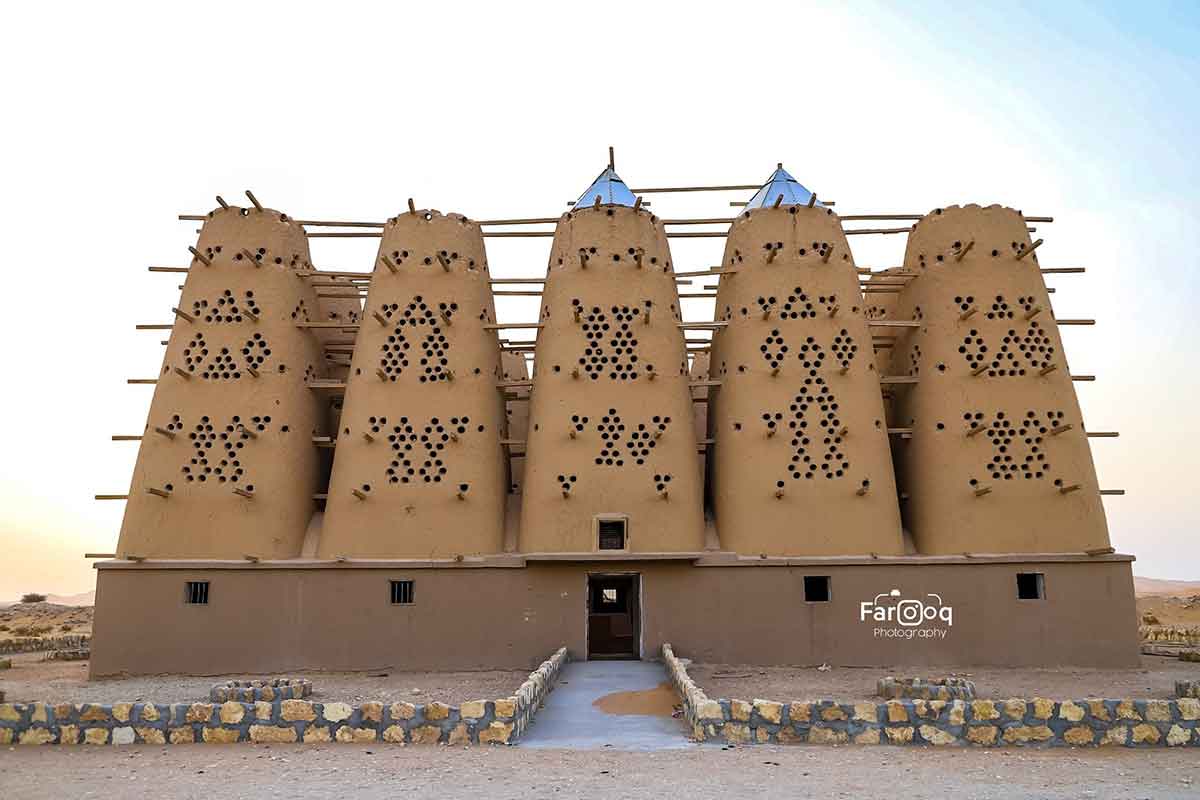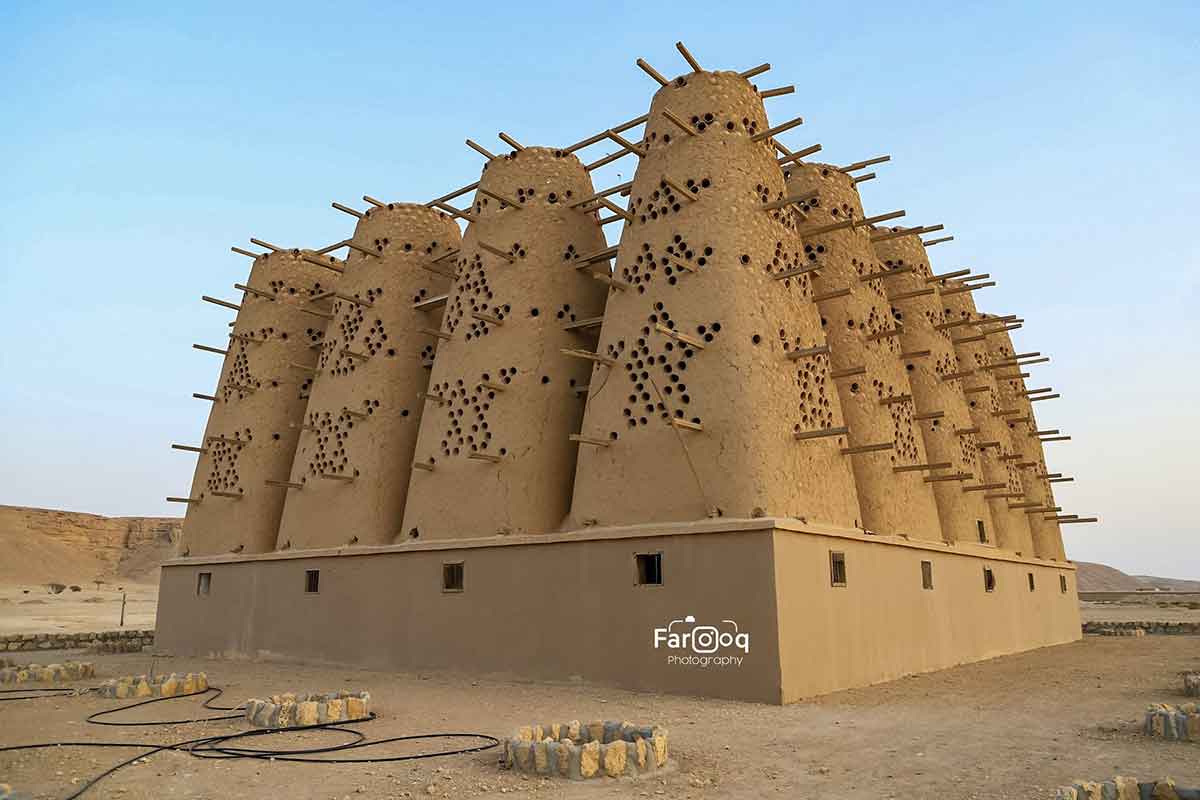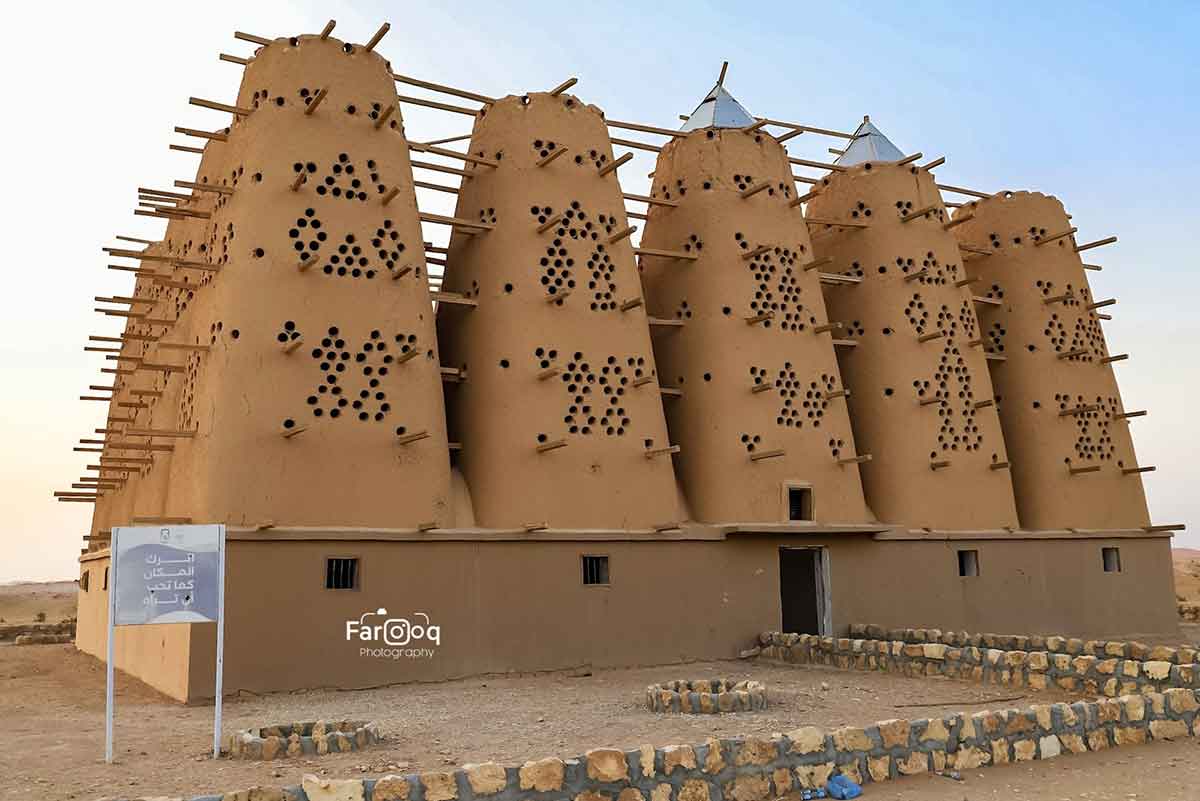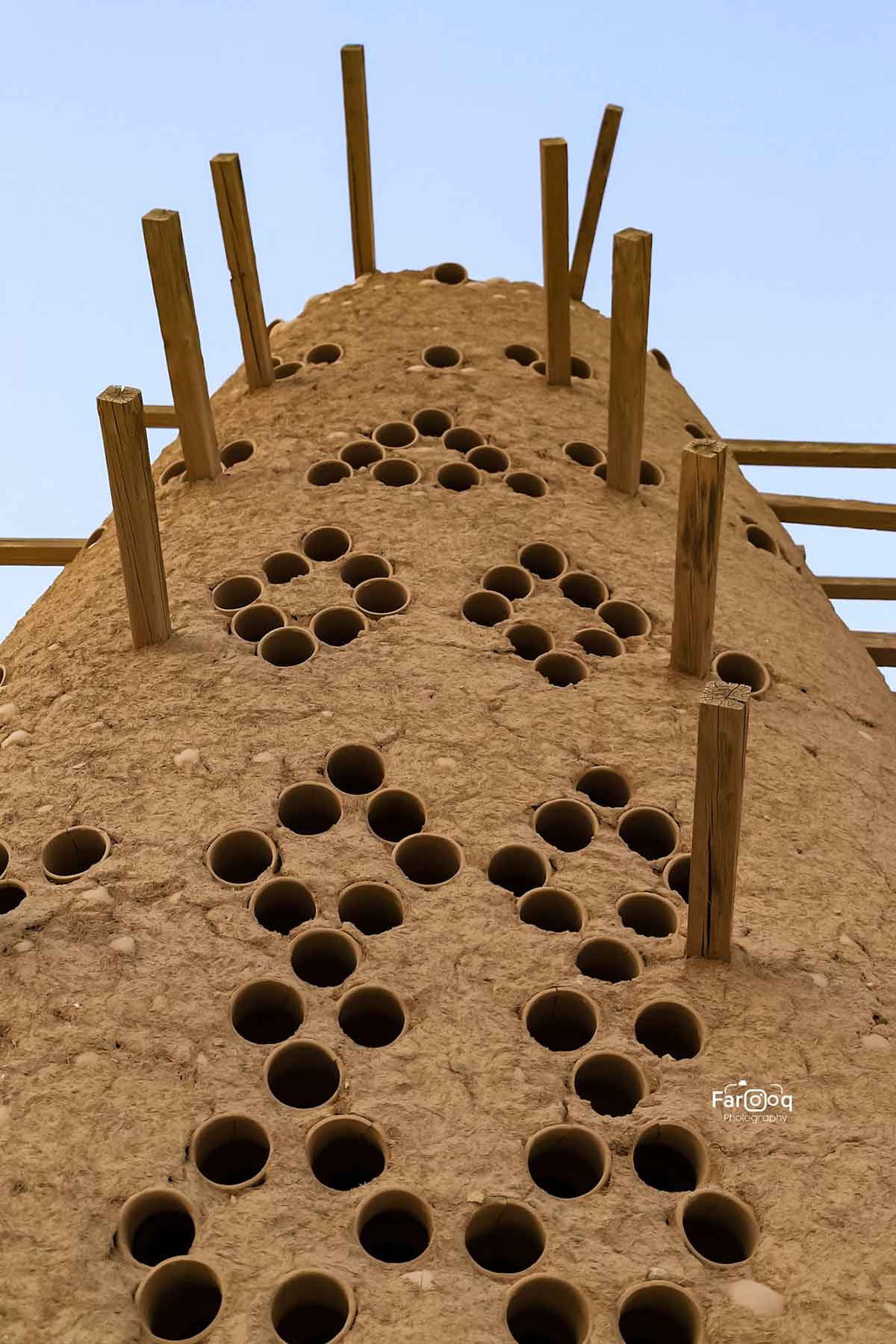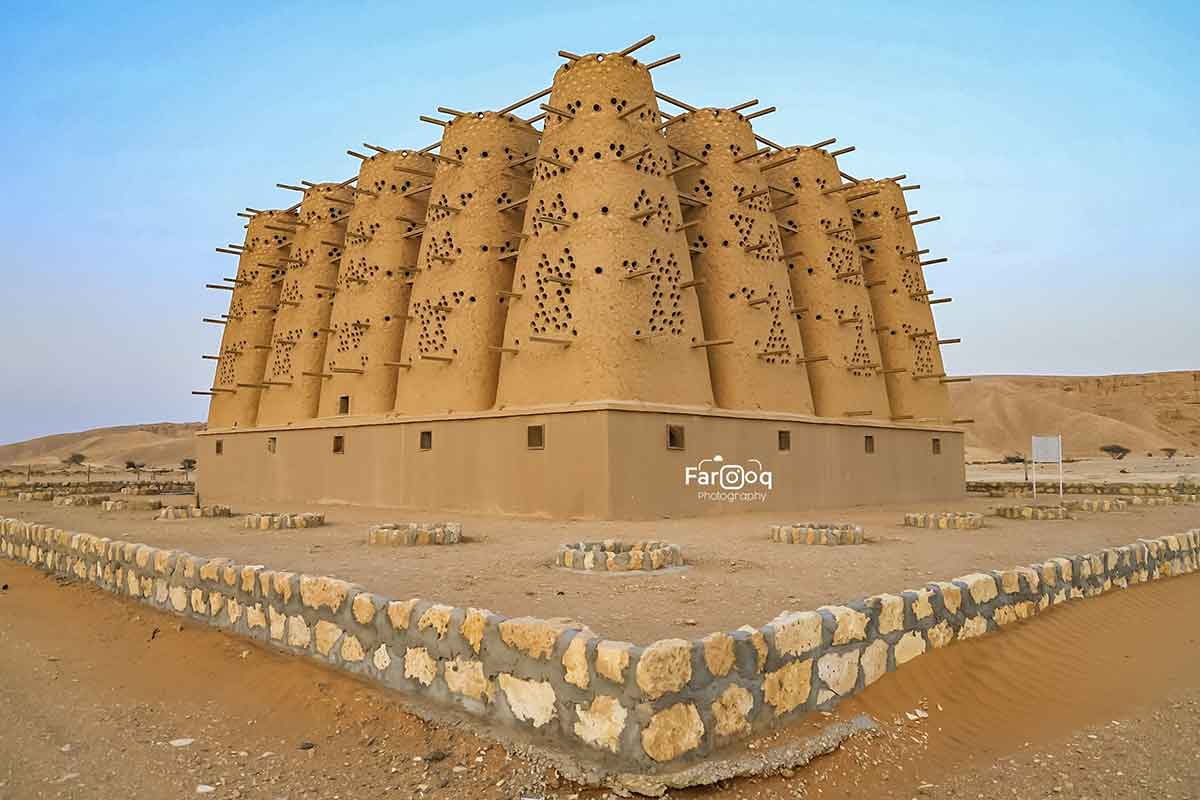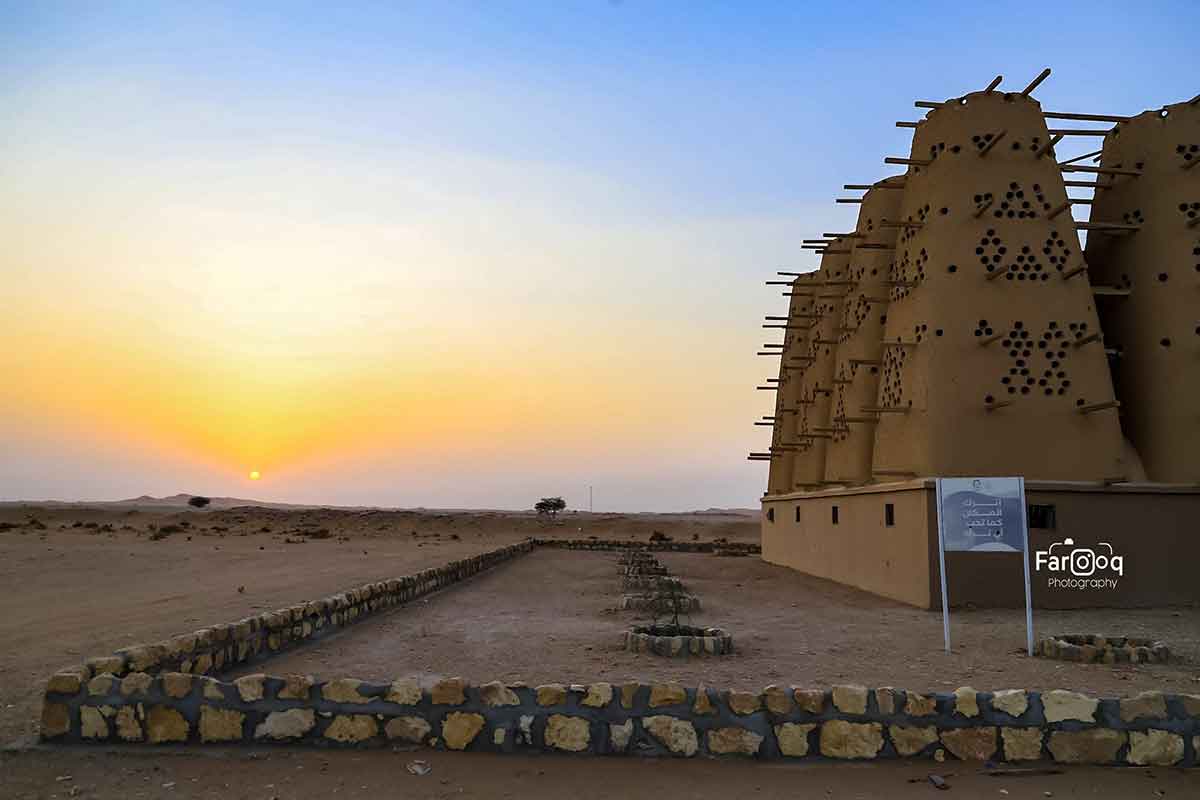Some 90 km south of Riyadh, the capital of Saudi Arabia, on the dusty desert surface surrounding the town of Ad Dilam, rises an enigmatic structure whose use is difficult to identify at first glance. The structure consists of 14 conical towers, built of adobe with wooden beams protruding from them, and a series of holes lined up in rhomboidal shapes on their various faces. Well, you only have to ask any local resident to find out that it is a large dovecote, currently in disuse. The building is also an example of the architecture of the towers that have been built in various shapes and sizes throughout the Middle East since at least the Middle Ages for pigeon breeding.
Indeed, the interior of the 14 towers of Ad Dilam, which are hollow, have hundreds of cylindrical niches in their walls that are the ideal size for pigeons to nest and raise their chicks in. Wooden beams cross the space from one wall to the other, so that, in addition to ensuring the solidity of the towers, they serve as perches for the birds to sit on. The ensemble of 14 towers has very few openings for the birds to enter and exit. Thanks to this feature, as well as their design, which favours ventilation, the pigeons find shelter inside them from the sandstorms and high temperatures of the desert. But beyond providing a safe place for the pigeons to thrive and live in comfort, what was the function of these large dovecotes? In any case, they were not architectural elements dedicated to the leisure and entertainment of their owners, the farmers of the region, who were not engaged in pigeon-keeping as a mere pastime.
According to sources, the pigeon towers provided farmers with much-needed fertiliser in nutrient-poor soil. At the same time, they were a source of protein for food, either from the eggs they provided or from the poultry meat itself. A further benefit of mass pigeon farming, as carried out in the towers of Ad Dilam, was the collection of feathers, from which pillows and other household items were produced. Finally, tall towers represented a symbol of wealth and status in traditional Saudi society. The more towers a family owned, the higher status they were accorded. Today, the few towers that remain in good condition are part of Saudi Arabia’s cultural heritage and offer a glimpse into the traditional Saudi way of life. With the country’s interest in tourism, they have become an interesting tourist attraction.
Sources: Zamzam.com, Colossal, Sarvar Umrah.
Images: Farooq Photography.


